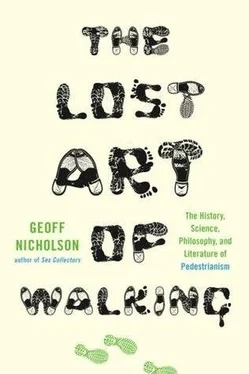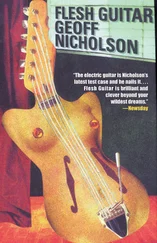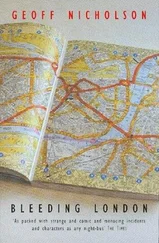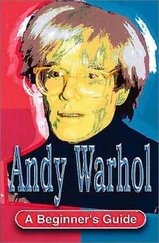In 1978, Winogrand moved to Los Angeles. Some of the work he did there is wonderful. One of my favorite photographs — I have a poster of it in my office — was taken at LAX airport and shows two women in superbly stylish 1960 sdresses, heels, and hairdos, backs to the camera, walking toward the futuristic Theme Building. However, the move to L.A. coincided with Winogrand’s going shutter-crazy. In the eight or so years he was there he took more than a third of a million pictures, or at least that’s how often he pressed his camera’s shutter. But this was not picture making or photography as most of us understand it. The vast majority of the film he exposed was left unprocessed. Some rolls were developed but never printed. Even when contact sheets were made he gave them only the slightest attention, never engaging with them long enough or seriously enough to do anything resembling editing.
Some of these contact sheets have been displayed in exhibitions and published in magazines, and although no photographer should be judged by the quality of his contact sheets, it appears from these that Winogrand had not only lost his luck, he had lost his eye, too. Apparently he also lost some of his basic technical competence when it came to exposure, processing, and camera shake.
Most significant, a lot of them are taken from a moving car. Often in his L.A. period Winogrand sat in the passenger seat and was driven around the city by various friends and associates while he shot relentlessly through the windshield or the open side window. He had always done this to some extent — quite a few of the photographs of the road trip depicted in his book 1964 are taken from a car, but by no means most. Maybe he thought this modus operandi was appropriate to Los Angeles. All the same, there’s something dispiriting about it.
Of course a photographer can do whatever he wants, use any method that occurs to him, but for Winogrand this method of working seemed to mark a profound dislocation and separation. The pictures have a perfunctory, stolen look. Once he had been a fellow walker, a fellow traveler, sharing the same street, the same sidewalk, as his subjects — now he was doing drive-bys. He still photographed people, including people walking, but he also endlessly pointed his camera at parked cars, empty intersections, and blank streets.
John Szarkowski has written, ‘Many of the last frames seem to have cut themselves free from the familiar claims of art’, which is a thrillingly elegant and charitable way of saying that a lot of these photographs seem to be of nothing in particular, though not quite of nothing at all.
♦
In London I went to see Martin Parr, one of my very favorite photographers, and a man who was quick to say, ‘I’m not the biggest street photographer, you realize. The real street photographer I know is Bruce Gilden. He really does work on the streets, still, and he’s very religious about going out’.
Bruce Gilden was just a name to me at that time, although I’d seen and admired his work. And frankly Martin Parr seemed to be enough of a street photographer for most purposes. He was also the only street photographer I happened to know.
Parr made his reputation in England in the 1970 s, with photographs showing very English people doing very English things, some working class, some posh. His subjects were the English seaside, English garden parties, horse trials, empty rugby grounds, people trudging through terrible English weather.
International success has taken him around the world and broadened his subject matter — international tourism is a major interest — but the eye is much the same. A recent collection of his work is in The Phone Book , a series of close-ups of people talking on their cell phones, photographs snatched in public or on the streets, often taken just a couple of feet from the subject’s face.
We met at Martin Parr’s London office, just a stone’s throw from Bunhill Fields, Iain Sinclair’s walking ‘epicenter’. Parr accepted my basic premise that being a street photographer involves doing a lot of walking.
‘Yes. Basically you keep walking and you think, ‘God, this is boring, it’s going nowhere’, and suddenly something will happen. So really all you do is keep walking, because you know that sooner or later you’re going to get something. You become a hunter, if you like, a hunter-gatherer.
‘The thing you’ve got to remember is, most of the time there’s nothing happening and suddenly it will happen, but you can’t have the time when it happens without having all the dull time, so even though you’re not taking good pictures, you’re in the rhythm. You know, you have to take some bad pictures, because if you only saved yourself for one good one you’d never take one at all, and suddenly you’re onto something, and you might take two or three frames of the same shot’.
In fact, this describes my own experience of walking without a camera. A walk is never equally fascinating for its whole length. Certain stretches may seem dull or mundane, and then suddenly you see a number of amazing things that make it all worthwhile.
I wondered if Martin Parr had developed a sense for loitering in certain places that were likely to produce the shots he was looking for. Did he ever simply lurk rather than walk?
‘Sure. You’re looking for a place where you know things might reveal themselves, but generally on the street you don’t get much background, people take up most of the action, but I certainly know in the case of Bruce Gilden, he returns to the same place, he knows exactly where, the time of the day, the traffic flow in terms of people, and he’ll keep going back to those places. You can almost recognize people, you know. You [the photographer] become almost part of the street furniture’.
I asked what reaction he got from people he photographed on the street.
‘It varies’, he said. ‘Occasionally people say, ‘What on earth are you doing?’ I’m not as aggressive as Bruce Gilden. He’s aggressive. If you appear guilty, then people are going to get cross with you. If you appear confident in what you’re doing, it helps enormously. That’s why Gilden gets away with it. He thinks it’s his absolute right to be on the street photographing, and he’s absolutely correct, of course. Therefore there is no problem, there is no issue, whereas I get people who write to me or I meet people who say, ‘How can you do that, photograph strangers walking on the street?’’
Did he ever encounter aggression?
‘Occasionally. It’s inevitable. And more and more of course these days as people know their rights and it gets more difficult to be a street photographer. It’s a dying tradition because now everyone sets everything up, and there are problems with model releases. It feels like an outdated mode. Philip-Lorca diCorcia is the last really modern street photographer, and of course he’s moved on from that as well’.
DiCorcia was the photographer who set up cinematic lighting rigs on the street, waited for people to walk into the frame where they were perfectly lit, and then pressed the shutter. He got into a whole lot of trouble for it, too. He was sued by a Jewish Orthodox priest, of eye-catching appearance, named Emo Nussenzweig, under New York’s right-to-privacy laws that forbid the use of a person’s likeness for commercial purposes without the person’s permission. The case went to the Manhattan State Supreme Court, where it came down to a definition of commerce, or more properly, of art.
Even though DiCorcia made money from the photographs, it was declared they were first and foremost art, and therefore he was protected under the First Amendment. This is something else Garry Winogrand might have said to the woman who protested his taking her picture. It’s good to know that street photography is a form of free speech, but having to go to the Manhattan Supreme Court to prove it is the kind of thing that must deter newcomers to the field.
Читать дальше












